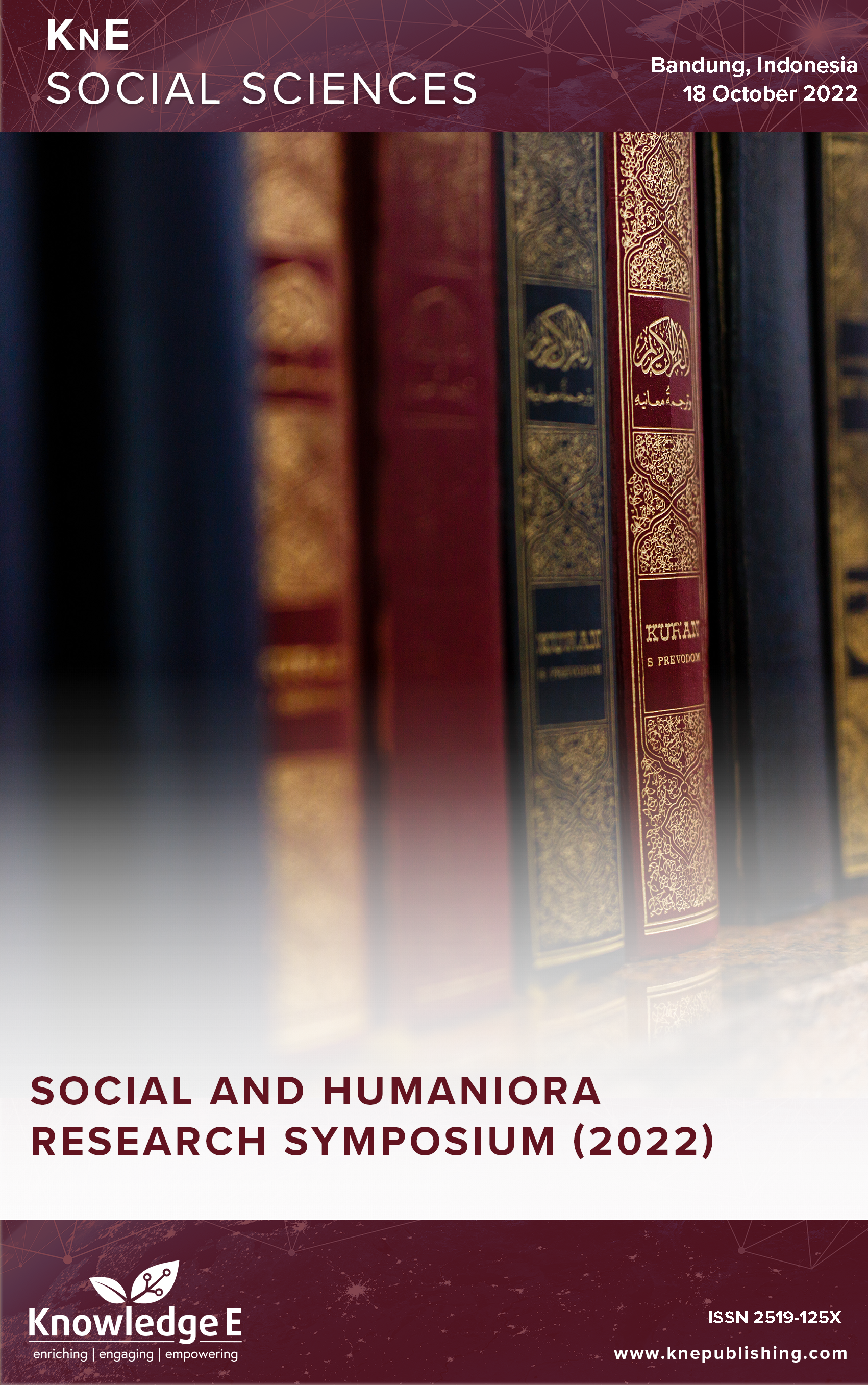Business Communication in Improving the Entrepreneurial Skills of SME Members
DOI:
https://doi.org/10.18502/kss.v8i18.14252Abstract
The Sapta Mandiri Entrepreneurs Association, representing Small and Medium Enterprises (SMEs) in Bandung Regency, stands out as an association of business actors that has successfully weathered the challenges posed by the Covid-19 pandemic. This association actively engages in business communication to enhance the entrepreneurial skills of its members. This article presents the findings of research conducted on this phenomenon. The primary objective of this research is to analyze the different types of business communication utilized, the factors influencing business communication, and the specific purposes behind such communication in improving the entrepreneurial skills of SME members. The research approach employed for this study is a case study, while data collection techniques include literature review, in-depth interviews, and observation. The research informants comprise administrators from the Sapta Mandiri Entrepreneurs Association. The results of the study reveal two main types of business communication practiced within the association of entrepreneurs: horizontal communication and vertical communication. Several factors have been identified to influence business communication, including perception, credibility, accuracy, suitability, and control. The primary purposes of business communication are to provide essential information, persuade members, and foster cooperation, thereby contributing to the enhancement of entrepreneurial skills among SME members. In conclusion, the Sapta Mandiri Entrepreneurs Association has demonstrated resilience during the Covid-19 pandemic by employing effective business communication strategies. This has enabled the association to support its members in enhancing their entrepreneurial skills and navigating through the challenging business landscape.
Keywords: business communication, entrepreneurship, SME business people, the Covid-19 pandemic
References
[2] Casalo LV, Flavian C, Ibanez-Sanchez S. Influencers on Instagram: Antecedents and consequences of opinion leadership. Journal of Business Research. 2020;117:510– 519.
[3] Dahiya R. A research paper on digital marketing communication and consumer buying decision process: An empirical study in the Indian passenger car market. Journal of Global Marketing. 2018;31(2):73–95.
[4] Fauzi F, Al-Khowarizmi AK, Muhathir M. The e-business community model is used to improve communication between businesses by utilizing union principles. Journal of Informatics and Telecommunication Engineering. 2020;3(2):252–257.
[5] Hardhiyanti Y, Rasyid UN. Komunikasi Bisnis Berbasis Etika Lingkungan Sebagai CSR The Body Shop Indonesia (Studi Kasus: Kampanye# Pay4Plastic). Bricolage. 2017;3(2):110.
[6] Haryani DS. Pengaruh Periklanan Dan Promosi Penjualan Terhadap Keputusan Pembelian Pada Perumahan Griya Puspandari Asri Tanjungpinang. Jurnal Dimensi. 2019;8(1):54–70.
[7] Lee S, Kim E. Influencer marketing on Instagram: How sponsorship disclosure, influencer credibility, and brand credibility impact the effectiveness of Instagram promotional post. Journal of Global Fashion Marketing. 2020;11(3):232–249.
[8] Mark DU, Grahame RD, Kathy H. Customer loyalty and customer loyalty programs. Journal of Consumer Marketing. 2003;20(4):294–316.
[9] McNeill LS. Sales promotion in the supermarket industry: A four country case comparison. The International Review of Retail, Distribution and Consumer Research. 2012;22(3):243–260.
[10] Melovic B, Jocovic M, Dabic M, Vulic TB, Dudic B. The impact of digital transformation and digital marketing on the brand promotion, positioning and electronic business in Montenegro. Technology in Society. 2020;63:101425.
[11] Moleong LJ, Edisi P. Metodelogi penelitian. Bandung: Penerbit Remaja Rosdakarya; 2004.
[12] Mulyana D. Metode Penelitian Kualitatif, Bandung: PT. Bandung: Remaja Rosda Karya; 2002.
[13] Philip K, Keller KL. Manajemen Pemasaran, Jilid 1, Edisi 12. Indeks ( Jakarta): Penerbit PT; 2008.
[14] Pikhart M. (2017). Managerial communication and its changes in the global intercultural business world. SHS Web of Conferences, 37, 01013.
[15] Puspitasari F, Gusfa H. Strategi Promosi Online Shop melalui Sosial Media dalam Membangun Brand Engagement.“. Jurnal Ilmiah Ilmu Komunikasi. 2017;7(2):115–130.
[16] Rahman S. Internet Marketing. Jakarta: PT Elex Media Komputindo; 2012.
[17] Serumaga-Zake PA, Kotze D, Arnab R, Sihawu JN, Depha Y, Gaba M, et al. Poverty alleviation: Intervention, and designing and developing a survey instrument for investigating the effect of entrepreneurial skills on the performance of a small business in South Africa. Journal of Small Business & Entrepreneurship. 2005;18(2):221–230.
[18] Silaningsih E, Utami P. Pengaruh marketing mix terhadap minat beli konsumen pada usaha Mikro Kecil dan Menengah (UMKM) Produk Olahan Makanan Ringan. Jurnal Sosial Humaniora. 2018;9(2):144–158.
[19] Sulianta F, Juju D. Branding Promotion With Social Networks. Jakarta: Gramedia; 2010.
[20] Westberg K, Pope N. Building brand equity with cause-related marketing: A comparison with sponsorship and sales promotion. Journal of Marketing Communications. 2014;20(6):419–437.
[21] Yin RK. Studi kasus (desain dan model). Jakarta: Rajawali Pers; 2002.

